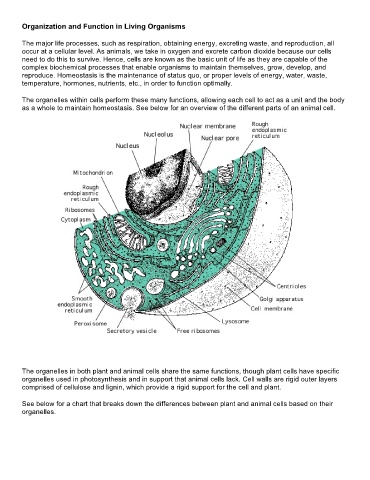Page 298 - ABCTE Study Guide_Neat
P. 298
Organization and Function in Living Organisms
The major life processes, such as respiration, obtaining energy, excreting waste, and reproduction, all
occur at a cellular level. As animals, we take in oxygen and excrete carbon dioxide because our cells
need to do this to survive. Hence, cells are known as the basic unit of life as they are capable of the
complex biochemical processes that enable organisms to maintain themselves, grow, develop, and
reproduce. Homeostasis is the maintenance of status quo, or proper levels of energy, water, waste,
temperature, hormones, nutrients, etc., in order to function optimally.
The organelles within cells perform these many functions, allowing each cell to act as a unit and the body
as a whole to maintain homeostasis. See below for an overview of the different parts of an animal cell.
The organelles in both plant and animal cells share the same functions, though plant cells have specific
organelles used in photosynthesis and in support that animal cells lack. Cell walls are rigid outer layers
comprised of cellulose and lignin, which provide a rigid support for the cell and plant.
See below for a chart that breaks down the differences between plant and animal cells based on their
organelles.

